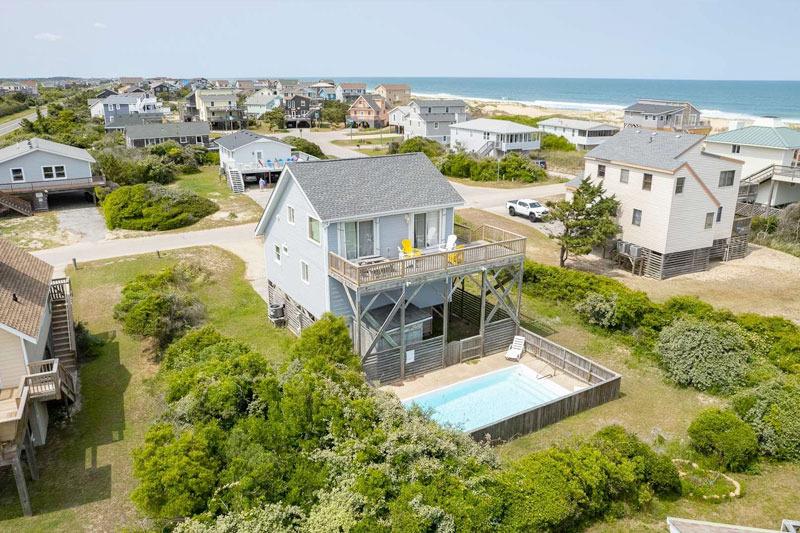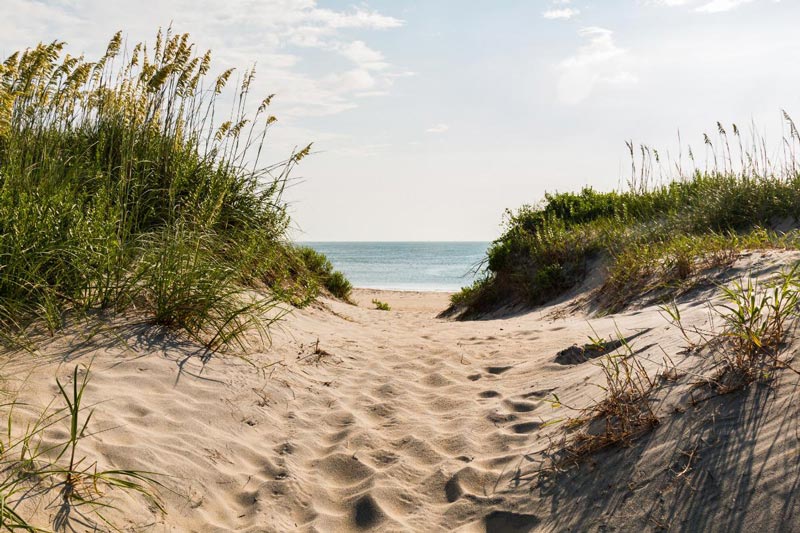
Outer Banks Bird Watching

Brown Pelicans, Image from Adobe Stock
The Outer Banks of North Carolina offer some of the best bird watching opportunities on the east coast. Not only are the beaches less crowded and the rental houses discounted, but Outer Banks bird watching is phenomenal in the fall and winter. However, visitors can experience a birding adventure year round. Expect to see various types of migrating birds in the winter months and birds returning for the warmer weather from Central and South America in the spring.

Dark-Eye Junco, Image from Adobe Stock
Offering over 8 miles of walking trails, Nags Head Woods is one of the largest maritime forests on the east coast and is one of four protected maritime forests on the Outer Banks. This ecological gem was named a National Natural Landmark in 1974 by the National Park Service. This maritime forest supports a diverse population of animals and plants, including colonial nesting birds, making it an ideal place for Outer Banks birding. Nags Head Woods is home to over 150 species of birds, with at least 50 of them choosing it as their nesting site. Birds reported here include great blue herons, ruby-crowned kinglet, wood duck, dark-eye junco, and more. Kitty Hawk Woods is another protected maritime forest on the Outer Banks that is worth checking out for more birding.
Getting There:
The address for Nags Head Woods is 701 Ocean Acres Dr, Kill Devil Hills, North Carolina 27948. Turn onto Ocean Acres Drive in Kill Devil Hills, across from McDonald`s at the stop light. Follow the road through the neighborhood, the road will change to an unpaved road, keep going until you see the parking lot and visitor center, marked by a sign. There are 8 trails to choose from, view the map here.
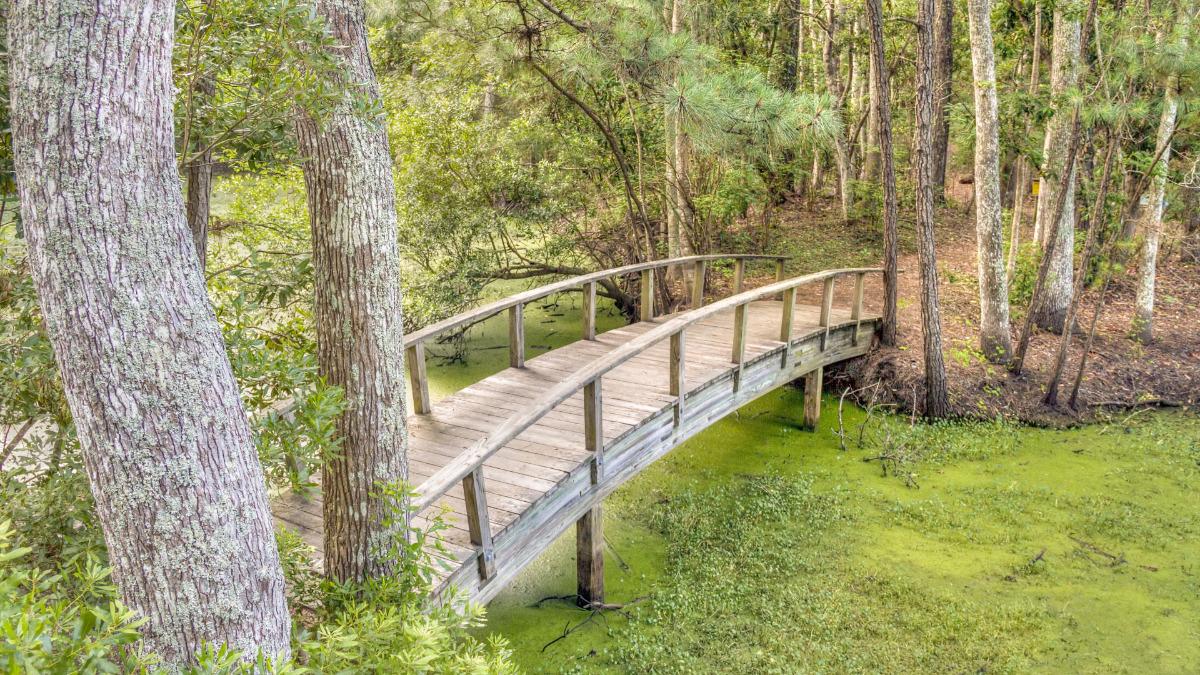
Nags Head Woods, Image from Adobe Stock
Where To Stay:
Stay close by in a condo overlooking the Atlantic Ocean on the Outer Banks in A Beach Escape, with 2-bedrooms, or for something a little bigger try A Change in Attitude with 3-bedrooms, located oceanside on the Outer Banks. Both vacation rentals are also a short drive to Jockey`s Ridge State Park where you can spot more migrating birds.

Snow Goose, Image from Adobe Stock
Located just under 10 miles from south Nags Head is a 13-mile stretch of land called Pea Island National Wildlife Refuge. This refuge`s main purpose is to provide a safe place for birds to nest, rest, and provide a wintering habitat. With an incredible bird list of over 370 species, Pea Island National Wildlife Refuge should be at the top of your list of places to visit on the Outer Banks. Visitors could see numerous beautiful birds such as a tundra swan, American oystercatcher, snowy egrets, brown pelican, and maybe even catch a glimpse of migrating snow geese. There have even been rare sightings of white pelicans! For those seeking guided experiences, volunteer-led bird walks are available at the Refuge Visitors Center. Continue south along the Cape Hatteras National Seashore for a chance to see black-bellied plovers and peregrine falcons. Or head to Buxton Woods on Hatteras Island to explore an east coast maritime evergreen forest.
Getting There:
Coming from the north on NC Highway 12, Pea Island begins after the Marc Basnight Bridge and ends at the northern border of Rodanthe. The address for the visitor center is 14500 North Carolina Hwy 12, Rodanthe, North Carolina 27968. Guests can park at the visitor center in a paved lot or along NC Highway 12 on the shoulders, just be cautious of soft sand. View the map of Pea Island here to plan which trails, outlooks, and spotting scopes to visit.

Pea Island National Wildlife Refuge Visitor Center, Image by KEES Vacations
Where To Stay:
Stay oceanfront in Salvo on the Outer Banks at To The Beach and Back, a 5-bedroom home with a pool and a hot tub. For a larger group try Zensation featuring a pool, hot tub, elevator plus lots more.

Viewing Platform at Bodie Island Lighthouse, Image from Adobe Stock
Located in Nags Head, Bodie Island Lighthouse has a boardwalk that goes through a salt marsh to a freshwater pond with a viewing platform, perfect for bird watching. Visitors can spot a variety of species here including a black-necked stilt, American avocet, killdeer, great blue heron, and more. There have also been reports of rare bird sightings here. Across the road from the lighthouse, be sure to check out Coquina Beach or head back north to Jockey`s Ridge State Park for a chance to see even more birds wading in the water such as brown pelicans, sandpipers, osprey, and blue herons.
Getting There:
The address for the lighthouse is 210 Bodie Island Lighthouse Road, Nags Head, North Carolina 27959. Visitors will turn onto Bodie Island Lighthouse Road and follow it back until the end where the lighthouse will be visible and there will be a parking lot. The boardwalk is located to the left of the lighthouse if looking at it from the front. Once on the boardwalk, walk all the way to the end until the viewing platform is reached.
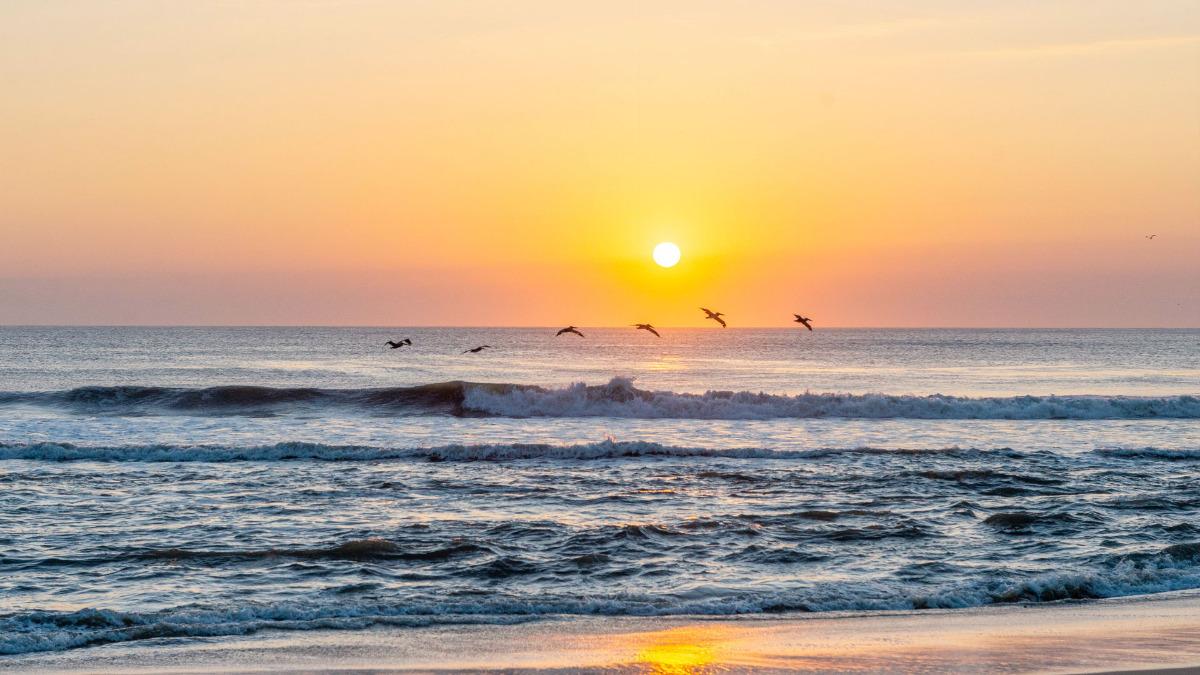
Coquina Beach, Image from Adobe Stock
Where To Stay:
Stay just under 3 miles away at Parrothead Inn, a 4-bedroom home with plenty of space to relax in an ideal Outer Banks location. Sea Think Wonder is another great option, just down the road, that is pet-friendly, has a pool, and is a short walk to the Atlantic Ocean.
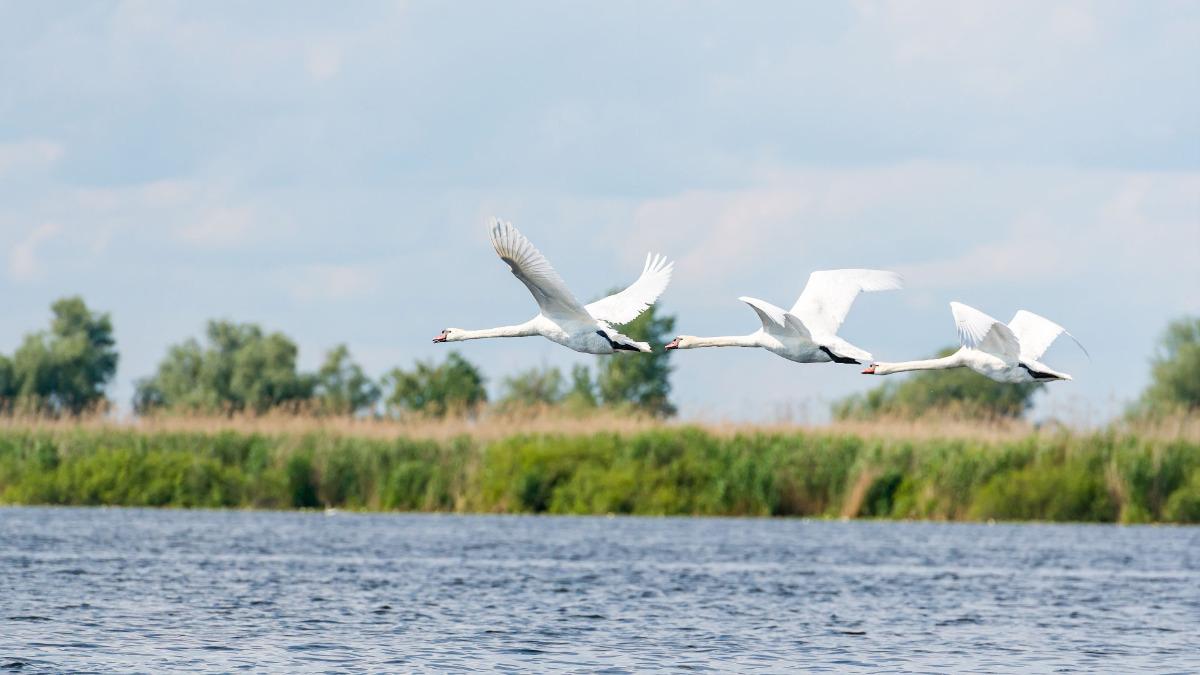
Tundra Swans, Image from Adobe Stock
Situated on the "mainland" just under 20 miles from Manteo. This National Wildlife Refuge boasts 153,000 acres that provide habitats to over 260 species of birds including tundra swan, red-bellied woodpecker, green winged teal, indigo bunting, and more. It also protects the rare pocosin wetlands and the diverse wildlife residing within. U.S. Fish & Wildlife Services also offer ranger-led guided tours around the refuge for visitors to learn even more.
Other spots to check out while visiting the Outer Banks and being close to Manteo include the Elizabethan Gardens, where bird watchers can see a large variety of migratory birds in the spring and the fall. The William B. Umstead Bridge, also known as Old Manns Harbor Bridge, is a nesting spot for purple martins in the summer and it is common to see thousands of them taking flight all at once at sunrise.
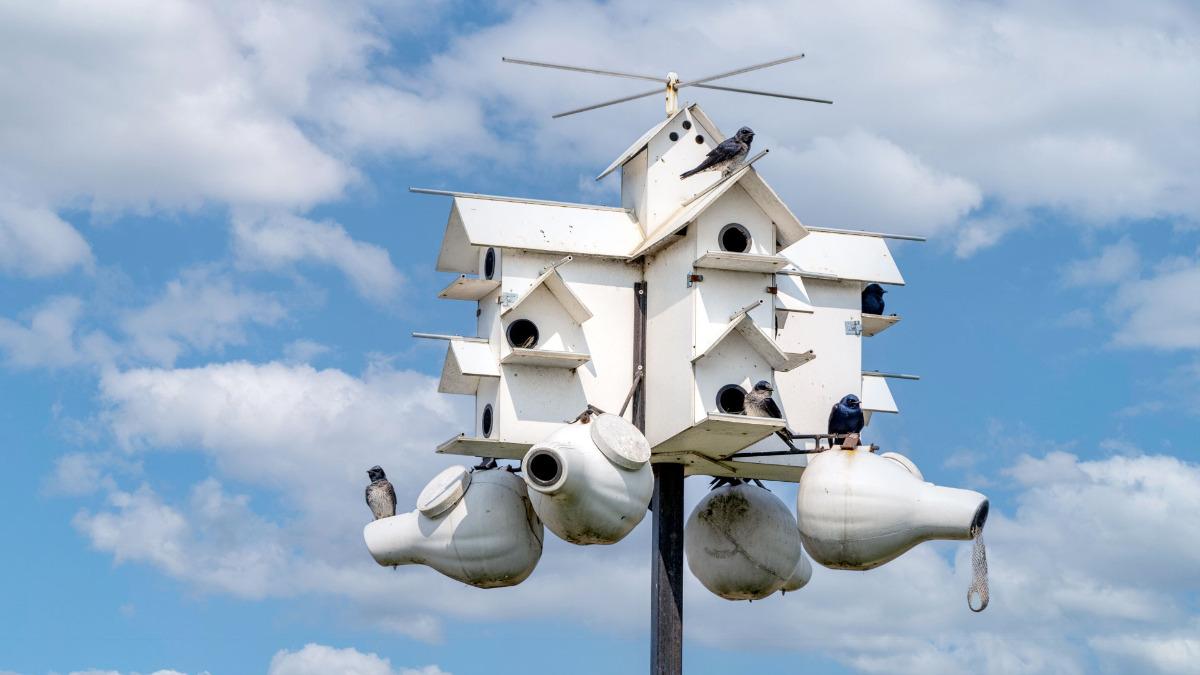
Purple Martins, Image from Adobe Stock
Getting There:
To reach one of the main entrances for the refuge and to reach Creef Cut Trail driving from the east, follow US Highway 64 from Roanoke Island west, go over the bridge, and through Manns Harbor. Six miles after Manns Harbor the entrance will be on the left on Milltail Road. The address for this trail is Creef Cut Trail, Manns Harbor, North Carolina 27953. View a map of the Refuge here and an interactive trail map here.

Alligator River, Image from Adobe Stock
Where To Stay:
Reserve your vacation on the Outer Banks soundfront at Holata Love in Manteo, a 4-bedroom home with a pool and a great view. Or stay at Westside Inn on Roanoke Island, where you are sure to spot wading birds year round near the private sound beach. Both of these homes are in central locations allowing guests to check out additional spots such as Oregon Inlet, Pea Island National Wildlife Refuge, Cape Hatteras National Seashore, and Kitty Hawk Woods as long as they don`t mind additional driving.
Every year bird watchers from around the world come together to the eastern United States for the Wings Over Water Festival held on the Outer Banks. This event took place this past October during fall migration at multiple locations including wildlife refuges. Additionally, there is the WOW Encore taking place in December and focusing on waterfowl. WOW Encore is a water wildlife festival that provides birders and photographers opportunities to see large flocks of migratory birds and waterfowl. Bird enthusiasts may see flocks of snow geese, American black duck, northern pintail, American wigeon, among others. The Wings Over Water Festival allows those interested to experience Outer Banks birding through guided kayak tours, trail tours, photography, and art. There have been sightings of numerous bird species including bald eagles, northern pintail, brown pelicans, tundra swans, snow geese, blue herons, and wood ducks during past events.

Northern Pintails, Image from Adobe Stock
North Carolina Birding Trail offers an interactive map that shows more Outer Banks birding. NC Birding Trail also offers great tips for those looking to start their birding adventure! The Outer Banks offers amazing opportunities to see migratory birds, various bird species, wintering waterfowl, and some of the best nature preserves on the East Coast. Stay with KEES Vacations to experience Outer Banks birding during breeding season, migrating season, or year-round whenever you need a vacation.





